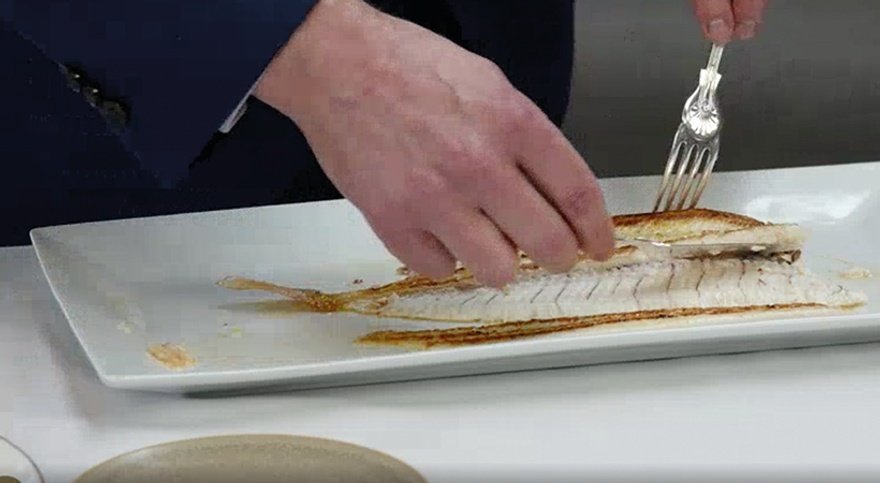How to fillet a Dover sole
To mark its 10th anniversary, the Gold Service Scholarship has produced a series of masterclasses in essential hospitality skills. Here Luigi Cagnin explains how to fillet a Dover sole tableside
Filleting is an art, a tradition, a ritual used to separate the best parts of the fish. When we are performing filleting in front of the table, there are three areas we need to remember. The first is the theatre, second is time and the third is the technical aspect.
Mise en place
The whole Dover sole is presented on a serving plate with two plates alongside. One heated plate to serve the fish to the guest, and another for the bones and offcuts, which you will remove from the guests' view. A fork and fish knife sit on a side plate.
Filleting
When we arrive at the table we will announce the fish, in this case a Dover sole. It is a whole fish with the head and tail attached. It is quite a large fish and it could easily serve two guests, but I am going to explain how to serve the filleted fish for one guest.
Dover sole has a very delicate texture and flavour, and if the temperature of the fish drops it becomes rubbery, so we must work quickly.
I make a long incision down the centre of the fish. I ‘crack' the head and tail, bending them upwards using a fork and fish knife. The head is then transferred to the waste plate.
I then start to remove the bones from the side of the fish – these small bones are very unpleasant if found on the plate. Pull the bones away from the fish very gently, using the fish knife. They come off very easily. Take a second to ensure you have removed all these small bones from one side before turning to the second side.
I then remove the upper fillets. Using the fish knife, slide it just under the fillet from the main incision, starting from the tail end, where it is most fragile, and gently separate the fillet from the bones. Move the two upper fillets to your presentation plate.
Now you have removed the two upper fillets we turn to the two lower fillets. Slide the blade of the knife between the spine and the lower fillets. We might find some resistance, so be gentle – it is very important not to crack the bones. Lift off the bones, which will include the tail bones, and place them on your waste plate, which you can then hide from the guests' view.
To serve
You should then gently transfer the fillets to the guest plate. I like to place the upper fillets on top of the lower fillets, as they appear on the fish, and then to part the upper fillets slightly to reveal the lower fillets below.
I place the fish as if the fillets were still attached, with the head on the left of the plate and the tail on the right.
We then move on to the grand finale. I say to the guest: "Here we have grilled Dover sole, skilfully filleted, and may I recommend some tartare sauce". I add a small spoonful of sauce to the plate to the side of the fish – we will always be around to serve more. Do not place the sauce on top of the fish and ensure it is not too close to the edge of the plate as the guest could get it on their clothes.
Remember, this is all part of the experience, so be speedy, be pleasant, be joyful. You are sharing an emotion as well as a craft.
Watch all of the series
Luigi Cagnin is restaurant manager at the Ritz London. You can view the rest of the masterclass videos at: thegoldservicescholarship.co.uk/masterclass-videos
Continue reading
You need to be a premium member to view this. Subscribe from just 99p per week.
Already subscribed? Log In











